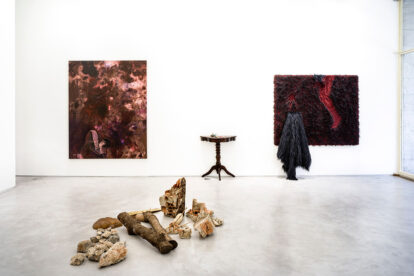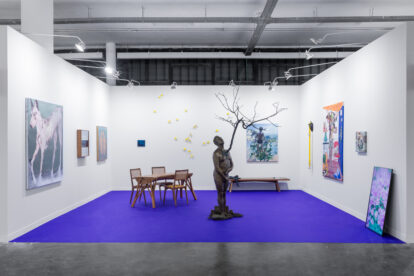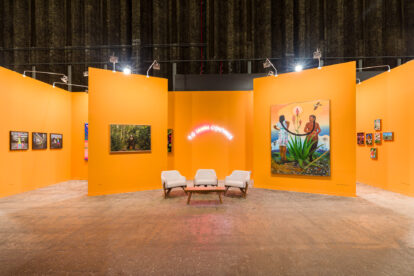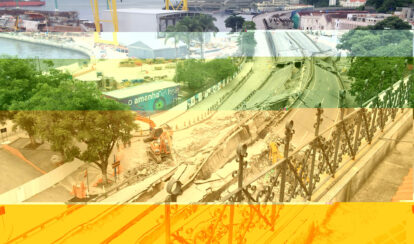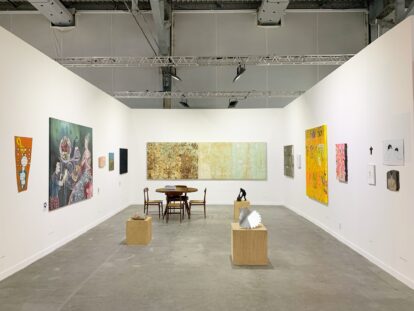From a dense abstract of stains, in which nuances of acrylic paint are accumulated, traces emerge that define everyday scenes. A character with feminine ornaments looks at herself in a mirror without reflection, in The Hole in the Mirror (2017). In another work, a hand holds a small firework, those that last no more than a few seconds and produce golden stars. In the work, the explosions are portrayed in deep color, whose title confirms that it is a Dark Fire (2017). The paintings, which are part of the Transmutações series, synthetically portray the vertiginous matter of crises and conflicts, but also of transformations and mysteries that make up the show Abismo Contínuo, by Marco Paulo Rolla. Like a fire that has barely ignited and has already gone out, without shine or heat, like an object that has just broken, like a body that has lost its balance, the works evoke the moments of disarray and nonconformity that seem to be made of our days. And they don’t cease, they deepen indefinitely.
However, and that is why we are alive and we even insist on being happy, there is the time of recreation at the threshold of instabilities. A work like The Birth of Love (2017) reminds us of this: it is also from the vortex of life that the plant sprouts, that joy arises, that laughter breaks out, that pain turns into strength. In bronze, the sculpture replicates the artist’s body, which served as a mold. Adorned on his feet by now obsolete electronic devices, the man has his head high, his eyes closed as if in ecstasy, his sex hidden by his hands. From the chest, a branch erupts. The subject there presents himself uncoupled from the technological prostheses, while traversed by nature. It refers to an entire sculptural tradition, evokes mythologies and at the same time is embedded in the present. The body, in the work of Marco Paulo Rolla, seems to act as an entity that triggers transformation processes or as a catalyst for transmutations. He is the mold of sculpture, as well as the subject of the works, the conductor of the performance, the motif of painting, the reason for drawings, collages, studies. From a conceptual point of view, for the artist, the body is the agent that mediates the matter of days and the breath of dreams, which connects spirituality and immanence, which brings individual subjectivity closer to collective experience.
Almost two decades earlier, in works such as A meia [The sock] (1998), objects appeared as metonymic elements of the presence of that same body that, as if made of nonconformity and secrecy, never fully revealed itself. The stocking indicated by the title takes the central portion of the painting, worn on a leg and arm painted on synthetic leather that descends from the top of the work, whose singularity is only not greater than the volume of fur that projects out of the painting, slightly touching the floor. Whether due to the continuity of the hidden human body, or the adornment that invariably refers to another nature of an animal (or a thing), there is excess and estrangement, as if any manifestation of ordinary life were also the expression of the extraordinary, something that also happens in A cup (1998). In the choice of objects and in the typology of things, a vocabulary that refers to a bourgeois, urban life is circumscribed, but which, throughout the artist’s trajectory, is interspersed with natural experiences.
Marco Paulo Rolla has been working since the 1980s, with a production whose breath is renewed with each generational twist. He is strongly identified with performance practice, which is right in the fact that he is one of the most talented and fruitful Brazilian artists in this field. Cama, mesa, escada [Bed, table, stairs] (2010), video recording of an action carried out at the 29th Bienal de São Paulo, lets you see a little of this collection. His excellence, however, is not restricted to this language. The body of paintings, sculptures, drawings, videos, collages, engravings show an artist who produces striking artistic gestures, does not constrain experimentation and moves through broad-ranging themes – dealing with human relations and institutionality, confronting tanates and eros, talking about desire and solitude, of nature and metaphysics, always starting from acute aspects, from uncertainty or speculation. The selection of works present in Abismo contínuo [Continuous Abyss ] reveals this diversity, with dates ranging from the 1990s to the present day.
Living and working in Jardim Canadá, near Belo Horizonte, for years, the artist’s studio is the hallmark of the abundance of his production. If outside the red earth floor keeps the arid roadside climate, inside the garden is humid and there are always a dozen works in progress, materials collected for future projects, in addition to a technical reserve that accumulates years of work. Marco Paulo Rolla has always combined his artistic practice with teaching and research. It is not a mere metaphorical resource to say that the artist is a school, since he is responsible for forming several groups of artists, as a teacher at the Guignard School and as the founder and coordinator of the Center for Experimentation and Information on Art (CEIA), which has been carrying out since 2000 important projects such as the International Performance Manifestation (MIP). The generosity of teaching (truly) touches those around him and, through constant exchanges, expands the possibilities of artistic work.
The exhibition presented here has been in preparation for several months. Like so many events in this pandemic context, it was postponed a number of times due to health impediments, which are also political and cultural. With each new event, with each new date, his works gained more relevance. In the space between abstraction and figuration, between what needs to be said, what remains silent and what is imagined, between resilience, mourning and transformation, the work of Marco Paulo Rolla, in Abismo Contínuo, reaffirms its need to go public, insisting on art and life.

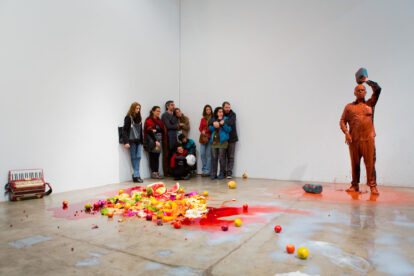
![Confortável [Comfortable]](https://www.vervegaleria.com/wp-content/uploads/2022/05/Captura-de-Tela-2014-08-13-s-19.20.27_o-768x497.png)
![Confortável [Comfortable]](https://www.vervegaleria.com/wp-content/uploads/2022/05/Captura-de-Tela-2014-08-13-s-19.21.15.png)
![Cama, Mesa e Escada [Bed, Table and Ladder]](https://www.vervegaleria.com/wp-content/uploads/2022/05/cama-mesa-escada-768x751.jpg)
![O Nascimento do Amor [The Birth of Love]](https://www.vervegaleria.com/wp-content/uploads/2022/05/siteDSC_5812-768x1151.jpg)
![O Nascimento do Amor [The Birth of Love]](https://www.vervegaleria.com/wp-content/uploads/2022/05/mprexp-88-768x512.jpg)
![Café da manhã [Breakfast]](https://www.vervegaleria.com/wp-content/uploads/2022/05/Captura-de-Tela-2014-08-13-s-19.48.20_o-768x514.png)
![Café da manhã [Breakfast]](https://www.vervegaleria.com/wp-content/uploads/2022/05/yt1s_com_-Cafe_da_Manha_2001_360p_Trim_AdobeExpress-2.gif)
![A Batedeira [The Mixer]](https://www.vervegaleria.com/wp-content/uploads/2022/05/eletrodomesticos-a-batedeira_1991_acrilica-e-colagem_210x154cm-1-768x566.jpg)
![Aspirador [Vacuum cleaner]](https://www.vervegaleria.com/wp-content/uploads/2022/05/Captura-de-Tela-2018-03-12-as-16.50.44_1059-768x569.png)
![A Máquina de Lavar [The Washing Machine]](https://www.vervegaleria.com/wp-content/uploads/2022/05/Captura-de-Tela-2018-03-12-as-14.59.43_831-768x602.png)
![Contrapontos e contratempos [Counterpoints and setbacks]](https://www.vervegaleria.com/wp-content/uploads/2022/05/Contraponto-e-contratempo-2017-Desenho-FotoLuizCarlos-33-X-26cm-2-768x544.jpg)
![Contrapontos e contratempos [Counterpoints and setbacks]](https://www.vervegaleria.com/wp-content/uploads/2022/05/Contraponto-e-contratempo-2017-Desenho-FotoLuizCarlos-33-X-26cm-1-768x512.jpg)
![Contrapontos e contratempos [Counterpoints and setbacks]](https://www.vervegaleria.com/wp-content/uploads/2022/05/Contraponto-e-contratempo-2017-Desenho-FotoLuizCarlos-28-X-19cm-768x1152.jpg)
![Contrapontos e contratempos [Counterpoints and setbacks]](https://www.vervegaleria.com/wp-content/uploads/2022/05/Contraponto-e-contratempo-2017-Desenho-FotoLuizCarlos-26-X-64cm-2-768x512.jpg)
![Preenchendo o espaço [Filling up the space]](https://www.vervegaleria.com/wp-content/uploads/2022/05/29_0903_victortakayama_abertura-35_1000-768x512.jpg)
![Preenchendo o espaço [Filling up the space]](https://www.vervegaleria.com/wp-content/uploads/2022/05/Captura-de-Tela-2015-07-01-s-17.32.51_1052-768x507.png)
![Preenchendo o espaço [Filling up the space]](https://www.vervegaleria.com/wp-content/uploads/2022/05/Captura-de-Tela-2015-07-01-s-17.35.30_1050-768x510.png)
![Derramamento [Spilling]](https://www.vervegaleria.com/wp-content/uploads/2022/05/Derramamento-2004-768x576.jpg)
![Derramamento [Spilling]](https://www.vervegaleria.com/wp-content/uploads/2022/05/Derramamento-2004--768x576.jpg)
![Beijo [Kiss]](https://www.vervegaleria.com/wp-content/uploads/2022/05/2018-19-Beijo-dissolicao-em-manchas-acidentais-foto-gabriel-boroni..jpg)
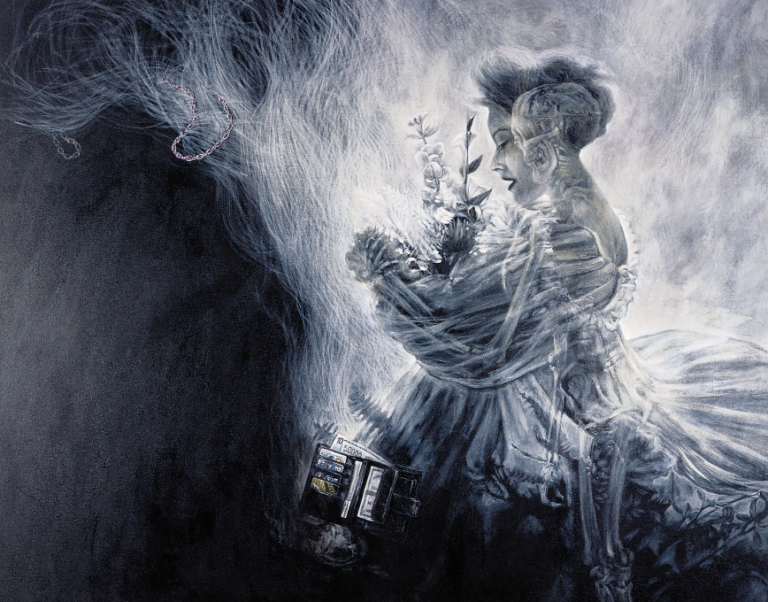
![Esmagamento sensível [Sensitive crush]](https://www.vervegaleria.com/wp-content/uploads/2022/05/CAN_8606_o-768x512.jpg)
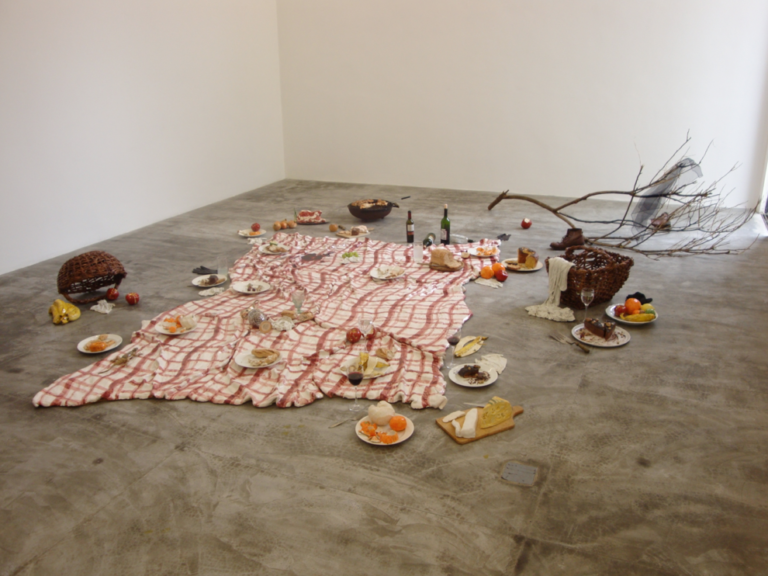
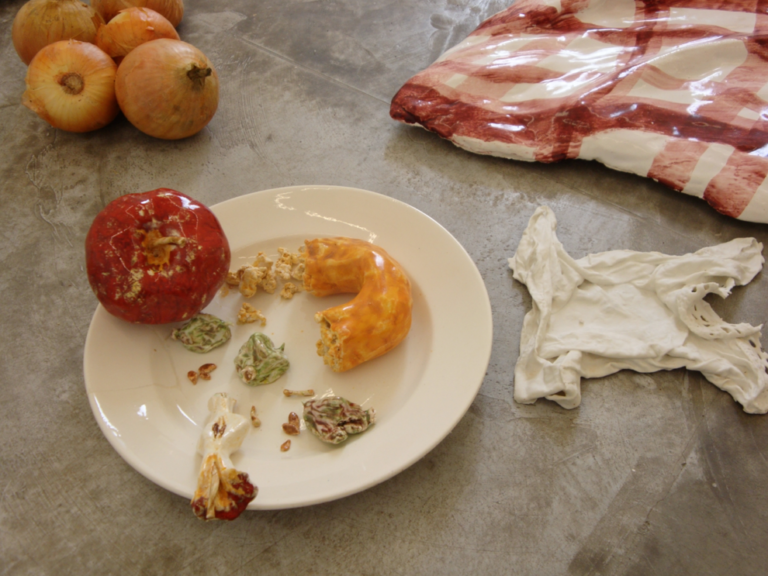
![Canibal [Cannibal]](https://www.vervegaleria.com/wp-content/uploads/2022/05/Captura-de-Tela-2014-06-14-s-18.41.57_o.png)
